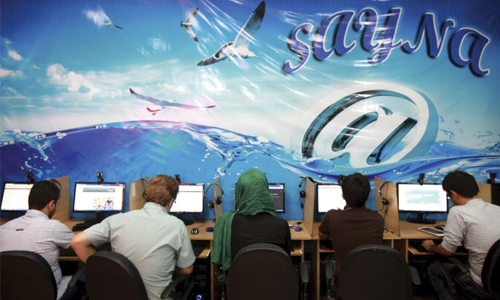After unrest, it’s ‘Halal’ internet in Iran
Dubai : Guns drawn, Iranian intelligence agents rushed into the apartment of a Washington Post reporter and his journalist wife in Tehran.
Threatening to kill Jason Rezaian in front of his wife, Yeganeh, the 20 agents in the July 2014 raid tore through their belongings and rifled through drawers, clothes and valuables for an hour.
But perhaps their most eagerly sought target wasn’t exactly inside the house: They forced the couple to hand over the passwords to their email and social media profiles.
That raid demonstrated how much of a threat Iran’s theocratic government sees in the internet. It has long sought to strictly control cyberspace and social media — and, thereby, the flow of information to the public.
But the Islamic Republic’s relationship with the world wide web is far more complicated than simple repression. Over the past four years, authorities have encouraged wider use of the internet among Iranians, hoping to generate the benefits of a more modern economy. As a result, nearly half the population has in its pockets a tool that the state is struggling to constrain: smartphones, with cameras and internet links that let anyone broadcast to the world.
Those smartphones helped spread the startling burst of protests across Iran that opened 2018. The government succeeded in suffocating the flare-up in part by shutting off key social media and messaging apps, but the lesson was clear: The same oxygen that can resuscitate commerce can also give breath to potential revolt.
Authorities’ solution has been to create a so-called “halal net,” Iran’s own locally controlled version of the internet aimed at restricting what the public can see.
As Iran approaches the 40th anniversary of the revolution that brought its cleric-led rule to power, how it handles the power of cyberspace will be crucial to its future, determining whether it moves to greater openness or seals itself off from the world.
“The Islamic Republic is not black and white. It shows a myriad of contradictions and its internet policy I think is one of the great examples of those contradictions,” said Sanam Vakil, an associate fellow at Chatham House who studies Iran. “The government has taken the internet and effectively used it for its own purposes and also has realized the dangers of it as well.”
Information spreads across mass media tightly controlled in Iran
All television and radio broadcasts within Iran are from state-run stations. Satellite dishes remain ostensibly illegal, though they are plentiful, drawing occasional attacks from bat-wielding government enforcers. Journalists face restrictions in what they can cover and where they can travel across a country of 80 million people that’s nearly two-and-a-half times the size of Texas.
The internet helped collapse that distance. During Iran’s 2009 protests surrounding the disputed re-election of hard-line President Mahmoud Ahmadinejad, still nascent social media spread word of the events among Iranians and brought videos of the shooting death of 26-year-old Neda Agha Soltan to the world.
Iran’s government, overseen by Supreme Leader Ayatollah Ali Khamenei, violently suppressed the demonstrations. The crackdown killed dozens and saw thousands imprisoned, with some tortured by their jailers.
Even before the 2009 protests, Iran blocked access to YouTube. Twitter and Facebook followed amid the unrest, as did many other sites later. Some in Iran began using virtual private networks, or VPNs, which allow users to bypass government censorship.
The chief difference between then and the protests that rocked the country coming into 2018 was the massive proliferation of smartphones. As recently as 2014, only an estimated 2 million Iranians possessed one. Today, estimates suggest Iranians own 48 million.
That explosive growth was spurred by the administration of President Hasan Rouhani, a cleric who is a relative moderate within Iran’s system. His officials allowed more mobile phone service providers to offer 3G and 4G internet, suddenly making sharing photos and images possible. Home internet connections became faster. The encrypted messaging platform Telegram spread like wildfire. Over 40 million Iranians are estimated to use it, for everything from benign conversations to commerce and political campaigning.
Related Posts

